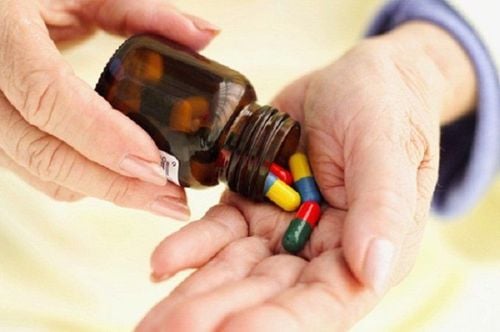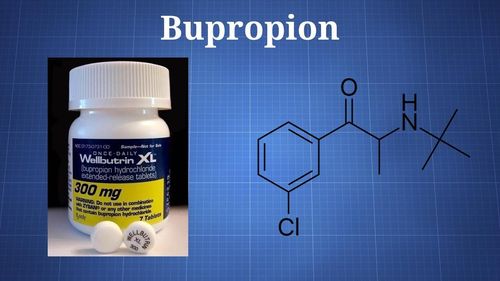This is an automatically translated article.
Regular exercise has been shown to be a method that can provide many psychological benefits for people undergoing treatment for depression. When applying the right exercises will help the body increase the secretion of endorphins, reduce stress and improve positive mood for people with depression.
1. What are the psychological benefits of exercise for depression?
One of the main psychological benefits of regular physical activity for health is improved self-esteem. When you exercise, your body releases chemicals called endorphins. These endorphins interact with receptors in the brain and reduce your perception of pain.
Endorphins also help trigger positive feelings in the body similar to morphine , such as the feeling of euphoria after jogging or exercising . This is the ultimate feeling of being physically active, which can bring about a positive and energetic outlook on life.
On the other hand, endorphins also act as a pain reliever and a sedative. They are produced in the spinal cord, brain, and many other parts of the body, usually released in response to neurotransmitters in the brain. The nerve receptors that endorphins bind to are the same receptors that bind to some pain medications. However, unlike morphine, the activation of these receptors by endorphins in the body does not lead to symptoms of addiction or dependence.
Many scientific studies have shown that regular exercise can bring certain benefits in the treatment of depression, including:
Reduce stress Limit anxiety and feelings of depression Improves sleep Improves self-esteem In addition to the above benefits, exercise also offers a number of other health benefits:
Strengthens heart health Helps increases energy levels Lowers blood pressure Strengthens and strengthens Strengthens bones and joints Improves muscle tone and strength Helps to reduce excess fat that causes obesity Brings a more balanced and healthy body

Tập thể dục cùng các thành viên trong gia đình giúp mọi người gắn kết cùng nhau hơn
2. Is exercise a treatment for clinical depression?
Several recent studies have shown that exercise is an effective but underused treatment for mild to moderate depression. Additionally, exercising outdoors (with proper sun protection) also helps boost your vitamin D levels and mood.
3. Exercise is beneficial for depression
In fact, any form of exercise can help you reduce the symptoms of depression and greatly support the treatment process. Here are moderate-intensity exercise that has been shown to be beneficial for depression, including:
Dancing Cycling Gardening Golfing Doing housework, especially sweeping, cleaning or vacuuming Playing tennis Aerobics Jogging at a moderate pace Swimming Walking Yoga In addition, strong social support is especially important for people dealing with depression. You should join a group exercise class or work out with your loved one. This will bring health benefits as well as a sense of comfort when you know that there are many people supporting and beside you.
4. Should you talk to your doctor before exercising?
For most healthy people can begin an exercise program without consulting a health care professional. However, if you haven't exercised for a long time, are over 50 years old, or have medical conditions such as diabetes and heart disease, you should talk to your doctor thoroughly about the right exercises for you. yourself before starting to practice.
For people who are being treated for depression, before starting an exercise program, there are a few things to consider:
Physical activities that you enjoy You like to exercise group or individual? What kind of exercise would be best for your health and treatment for depression? What physical conditions limit your exercise choices? What do you exercise for? (such as building muscle, losing weight, improving mood or flexibility)

Một số trường hợp, người bệnh cần trao đổi với bác sĩ trước khi tập thể dục
5. How often should you exercise to relieve depression?
People with depression should try to exercise at least 20-30 minutes about 3 times a week. Studies have shown that exercising 4-5 times a week has even greater benefits. However, if you are just starting to exercise, practice slowly to give your body time to adapt and get used to it. You should start exercising for 20 minutes, then gradually increase it to a maximum of 30 minutes.
6. Some tips to make it easier for people with depression to start exercising
When you first start doing a certain exercise program, you should have a specific plan for a routine that is easy to follow and maintain. It's important that you're comfortable with your workout routines, which will help keep you motivated to change and adapt to your exercise routine.
Here are some tips to make it easier for people with depression to start exercising, including:
Choose an activity that you enjoy most, as exercise for people with depression should bring happy and positive emotions. Include an exercise routine in your daily schedule. Try to change the exercises so that you don't get bored. Long-term commitment to physical exercise. If you regularly exercise, it will soon become a part of your life and help you reduce depression.
7. What to do when exercise causes pain?
If you experience pain during exercise, this can cause stress and damage to the muscles/joints if you continue to exercise.
In case of feeling pain a few hours after exercising, this could be due to overexertion and warns you to reduce your activity level. If the pain persists, becomes severe, or you suspect an injury, you need to seek medical help early to get a specific diagnosis.
If the pain prevents you from exercising regularly, you can also try some other measures to improve your mood, such as massage therapy or meditation. These methods can help stimulate the body to release more endorphins, increase relaxation and improve mood.
Please dial HOTLINE for more information or register for an appointment HERE. Download MyVinmec app to make appointments faster and to manage your bookings easily.
Reference source: webmd.com












